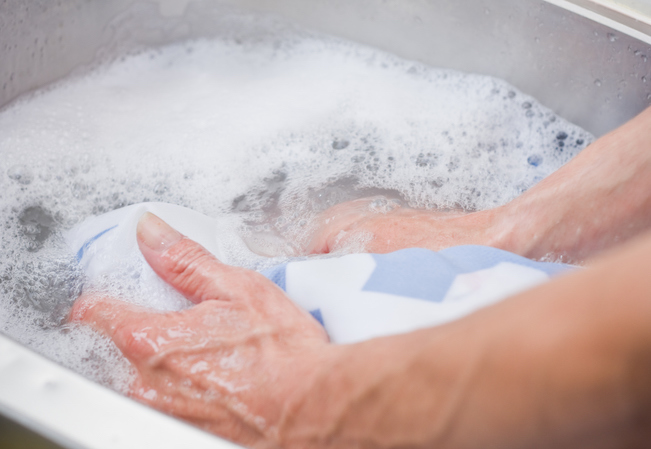Many people frown at the idea of having to make use of a small shower. They imagine that they will be limited when cleaning themselves after a day of work and that they won’t be able to have any storage at all when it comes to their shampoo and other cleaning products. However, this might not always be the case.
In this article, we will explore how to make your small shower inviting and luxurious, rather than cramped and peculiar. We’ll also look at some tips on how to keep this small space organized and easy to clean. Let’s dive deep into this topic.

Image Credit: http://bhg.com
Floor plan of the shower
Small showers are great for saving space, but you have to be careful of the layout. If you plan your shower right, it can be both spacious and easy to clean (have a look at the best walk-in shower ideas for more information).
The best way to do this is by maximizing the amount of wall space you have available.
You’ll also want to make sure that the showerhead is at an accessible height for everyone in your household. A good rule of thumb is that if someone has trouble reaching something on a shelf 6 inches off the ground, they’re going to have even more trouble with a small shower head that is much higher above them.
Keeping this in mind maximizes your storage space and makes cleaning easier while keeping all members of your family happy with their showers.
ccessories for small showers
You can take several steps to make your shower feel more spacious and luxurious. Adding items like a bench or hooks will give you more places to sit or place your towels, which makes the space feel less cramped.
A well-lit shower is also important for opening up the space. Placing light sources high on the wall gives the illusion of depth in a small shower.
Keeping your shower clean
Since showers are wet spaces that need regular cleaning, there are some concerns to keep in mind when designing a small one.
The first is not to make permanent changes that require costly repairs to make it easier to clean. For example, avoid using decorative tiles that require a specific grout width.
Another good way to streamline your cleaning is by using shower curtains and liners that can easily be removed from the hooks or rod. This allows you to take them down, rinse them off, dry them, and put them back up without ever having to touch the walls of your shower if it isn’t necessary.
Use the walls of the shower as storage by installing shelves or hooks
If you’re worried about there not being enough storage space, don’t forget that the walls of your shower are a great place to put shelves or hooks. These give you more places to put shampoo bottles and other items without taking up much room.
Of course, if your shower is very small, it might be difficult to fit things like shampoo bottles on these shelves. In this case, try using wall-mounted caddies that can hold several different items at once and hooking baskets onto the doors.
Keep in mind though that if you hang too many items next to each other they might start knocking into each other and warp or fall off their hangers entirely.
Install a top-mounted shelf
Another way to create more storage space in a small shower is to install a top-mounted shelf that stretches across the width of it.
These shelves are also great for keeping out shampoo bottles and other bottles from falling into the tub if you have children or pets running around your bathroom while someone else is showering. It might be a little difficult to keep larger items like loofahs or washcloths on this type of shelf, but they’re perfect for everyday essentials.
If there isn’t enough wall space around your drain to install one of these shelves, an alternative is installing the kind that hangs over the side of the tub. This gives you even more storage space without needing as much wall area.
Mix it up with different textures and types of tiles
Using different textures and types of tiles in your shower instead of the same type all over can make it feel larger. For example, you could use ceramic tiles on one side and natural stone tiles on the other. You’ll want to avoid using tiles that are small or thin since this will make your shower look like a miniature version of itself rather than normal-sized.
Keep the hardware minimal
Keep all knobs, valves, showerheads, and other hardware as streamlined as possible with no extra parts that stick out too far into the room. This will keep your bathroom looking modern and spacious with little effort required.
If you’re concerned about making sure things don’t fall off when they get wet, use ones that are sealed or small enough to fit in your hand comfortably.
Whatever you do, don’t underestimate how big of a difference little changes can make in the appearance of your bathroom. If it looks like there isn’t enough room for everything you want to put in it, adding just one or two more things can be just what you need to give it that luxurious feel.
Feature wall
If possible create a focal point on one of the walls by installing a feature wall with an interesting pattern, color, or texture.
This will draw attention away from the fact that the space is small and make it look bigger than if all four corners were equally visible.
Some people also like covering their whole shower area with this material, but it probably wouldn’t look as good with the whole room because there isn’t much room to work with.
Use light colors
Filling your bathroom with light colors will make it look larger than if you used dark colors, even if there’s no actual size difference between them. You don’t have to go for a completely white or off-white color either; using different shades of similar colors like pale blue and pale green can also achieve the same effect since they’re all still considered “light” without looking too harsh.
This goes for tiles on your walls and floor as well as paint colors. If the only shade of tile that you like comes in a darker color, try using grout that is the same color as the tile to make it look brighter.

Image Credit: http://mydomaine.com
Opt for a slanted ceiling
Low ceilings tend to appear less spacious than tall ones, so if you have the choice, having a slanted one will balance out all of your other features and give off a more luxurious appearance overall.
One way to get this look without hiring an expensive contractor is by literally slanting one corner of your ceiling yourself or with help from someone else. This way only half of it needs to be done, which keeps costs lower while still achieving the same effect.
The goal isn’t necessarily to have a completely flat ceiling, just a slightly lower one in certain areas. You could even add some decorative finishing touches around the corners to make it look even better.
Final thoughts on having a small shower
In conclusion, make sure the layout of your shower is as practical as possible and use textures, colors, and materials that will make it look larger than it is.
By using these tips you’ll be able to improve the area’s appearance without having to spend ridiculous amounts of time or money making those improvements.
Finally, if you’re interested in learning more about great shower ideas, you can continue reading and learn how to install a DIY walk-in shower successfully.
The post Small Shower appeared first on Kitchen Infinity.
Did you miss our previous article…
https://chefbuano.com/?p=161



